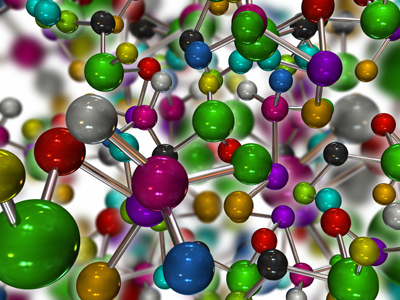Chemistry is the study of the composition, structure, properties and change of matter. It is mainly concerned with atoms and their interactions with other atoms.
An atom is the very basic unit of all matter. It contains a dense central nucleus that is surrounded by a cloud of negatively charged electrons. It comes from the Greek word atomos which literally means something that is uncuttable or something that cannot be divided.
At the center of an atom, or its core, is a nucleus. The nucleus contains protons and neutrons.
A proton is a particle that carries a positive electrical charge.
An electron is a particle that carries a negative electrical charge. Electrons determine the chemical properties of an element.
A neutron is a subatomic hadron particle that has no electrical charge. Its mass is slightly larger than that of a proton. The nucleus of every atom contains at least one neutron, with hydrogen-1 being the only exception. Neutrons bind with protons to stabilize the nucleus of an atom.
Together, protons and neutrons are referred to as “nucleons”.
The number of protons in the nucleus of an atom is known as the atomic number. As every element has a different number of protons, they own their own atomic number.
An atom is classified by the number of neutrons and protons it has in its nucleus. The number of protons determines the chemical element while the number of neutrons determines the isotope of the element.
An isotope is a variant contained in a particular chemical element. Isotopes have the same number of protons in each atom but the neutron numbers can vary.
An element is any substance that cannot be broken into two or more simpler substances. There are four common elements that include earth, air, water and fire.
A chemical element is a substance that consists of a single type of atom. Chemical elements are divided into metals, metalloids and non-metals. Examples include carbon, nitrogen, oxygen, silicon, aluminum, iron, gold, lead, mercury, copper and arsenic. The lightest chemical elements include helium, hydrogen, lithium and beryllium. Any two atoms that have the same number of protons in their respective nucleus belong to the same chemical element.








